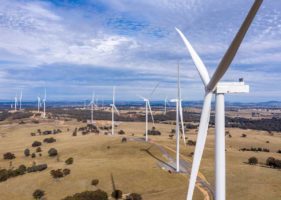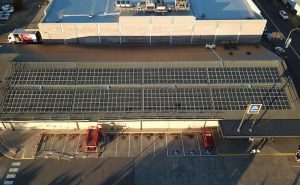The Emissions Reduction Assurance Committee (ERAC) has defended the integrity of the Emissions Reduction Fund, after dismissing claims made by the committee’s former chair that carbon offsets issued under the fund amounted to a ‘fraud on the environment’.
The ERAC responded to claims levelled by ANU researcher professor Andrew Macintosh, its former chair, that the methodologies used to issue Australian Carbon Credit Units (ACCUs) to a range of carbon offset projects were fundamentally flawed and not backed by any real reductions in greenhouse gas emissions.
In a statement published on the Clean Energy Regulator’s website on Wednesday, current ERAC chair David Byers says the body has completed its own assessment of Macintosh’s claims regarding offsets issued to ‘human induced regeneration’ and ‘landfill gas generation’ projects, concluding they were unsubstantiated.
“The assessment found the claims were not substantiated and there were serious deficiencies in the analysis of the two ERF methods,” Byers’ statement says.
“The ERAC takes very seriously its role to safeguard the integrity of ERF methods and has given these matters serious and careful consideration.
“The ERAC found that claims concerning the Human Induced Regeneration (HIR) method failed to present robust evidence of a lack of integrity or over-crediting.”
Byers says Macintosh’s assessment was “flawed”, as it relied on an incomplete dataset for the location of the ‘carbon estimation areas’ that have received carbon credit units under the HIR method.
“A key data set – the areas of land where the project activity to remove grazing animals actually takes place (known as carbon estimation areas (CEAs)) – cannot be publicly released due to legislative restrictions,” the statement says.
“The reliability of the analysis of Macintosh et al. is consequently distorted by not having access to CEA data.”
Macintosh was forced to base his assessment of the Human Induced Regeneration methodology on indicative data because the Clean Energy Regulator says it is prevented from publishing the full datasets by privacy laws.
In a separate statement, the Clean Energy Regulator said it would publish aggregated data for the carbon estimate areas but remained unable to publish data on individual projects.
The CER has previously defended the integrity of the Emissions Reduction Fund, which is set to be reviewed by the new Albanese government.
Byers also dismissed criticisms levelled by Macintosh of the carbon offset methodology that applies to landfill gas generators, which Macintosh had claimed did not achieve any additional reductions in emissions as they were already profitable without the need to be rewarded with additional carbon offset credits.
“Consequently, the ERAC found there was no basis for the Macintosh paper’s claim that such projects are profitable without the need for Australian carbon credit units (ACCUs).”
Byers, a former fossil fuel industry lobbyist, also criticised the nature of the claims made by Macintosh, which he said had been “cloaked in extravagant language”.
“Notwithstanding their highly technical basis, the claims have been cloaked in extravagant language including an allegation by Professor Macintosh that: ‘What is occurring is a fraud on the environment, a fraud on taxpayers and a fraud on unwitting private buyers of ACCUs’,” Byers said.
“The issuance of Australian Carbon Credit Units (ACCUs) is underpinned by a comprehensive set of audit requirements, with every project subject to at least three independent audits during its crediting period.”
Macintosh had said the Emissions Reduction Fund amounted to an “environmental and taxpayer fraud”.
Polly Hemming, an adviser to independent think tank The Australia Institute’s climate and energy team, said the extent of the response published by the Clean Energy Regulator was “unusual” in its efforts to discredit the research of professor Macintosh.
“The Clean Energy Regulator’s standard response is to discredit and undermine criticism or scrutiny, which is highly unusual for a regulatory body. In this instance by one of the most reputable and respected subject matter experts in this field,” Hemming told RenewEconomy.
“The ongoing controversy over the integrity or otherwise of ACCUs and the ERF will not be resolved by deflecting scrutiny and undermining critics. On the contrary, what is needed to provide assurance and certainty to carbon market participants and the taxpayer is transparency.”
The stoush effectively pits the current chair of the Emissions Reduction Assurance Committee against his immediate predecessor.
Macintosh was appointed as chair of the committee in 2015 and was replaced by Byers in 2021. Macintosh also served on the board of the Climate Change Authority and served on the Royal Commission into National Natural Disaster Arrangements.
Byers appointment to the ERAC has itself been a matter of some controversy, given Byers’ previous roles as the head of a number of fossil fuel industry lobby groups, including interim CEO of the Minerals Council of Australia and the CEO of the Australian Petroleum Production & Exploration Association (APPEA).










